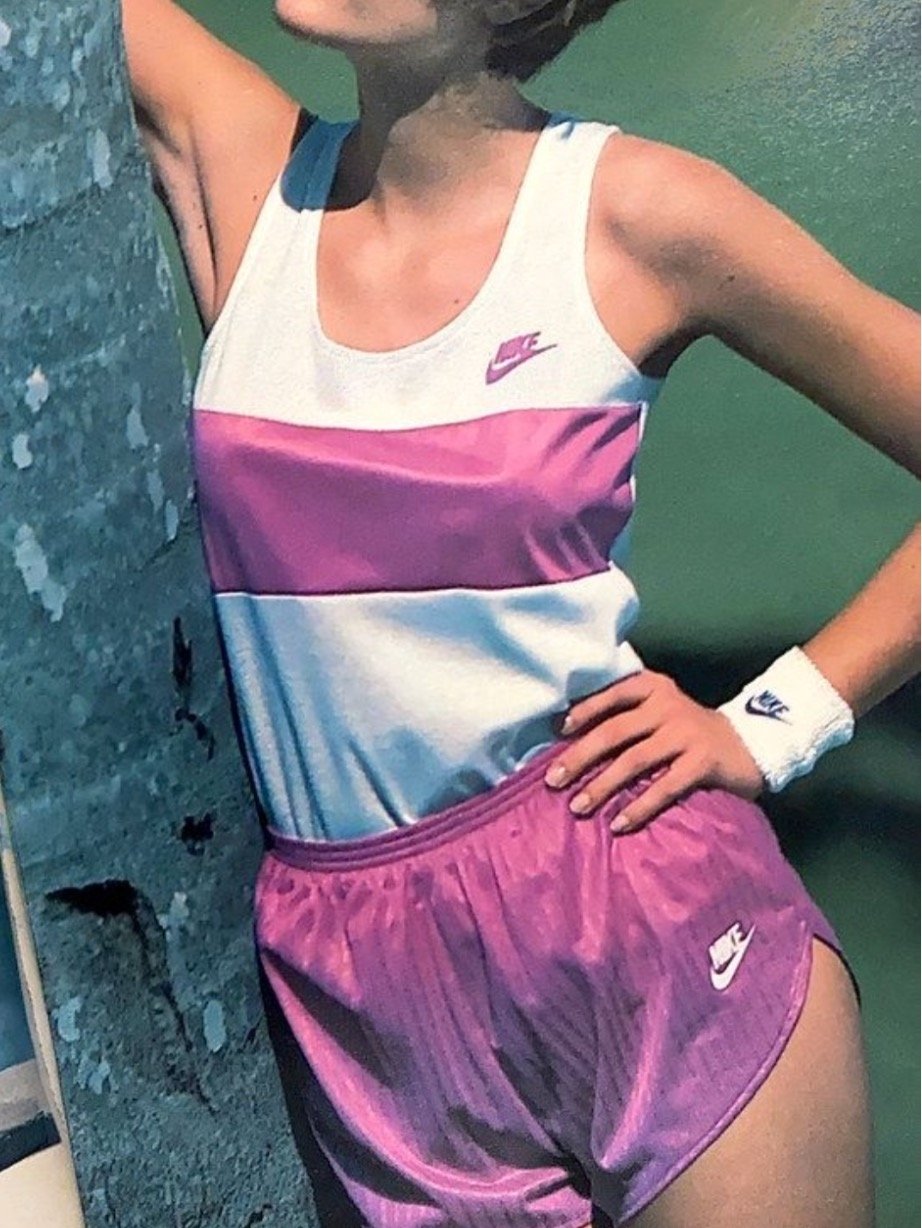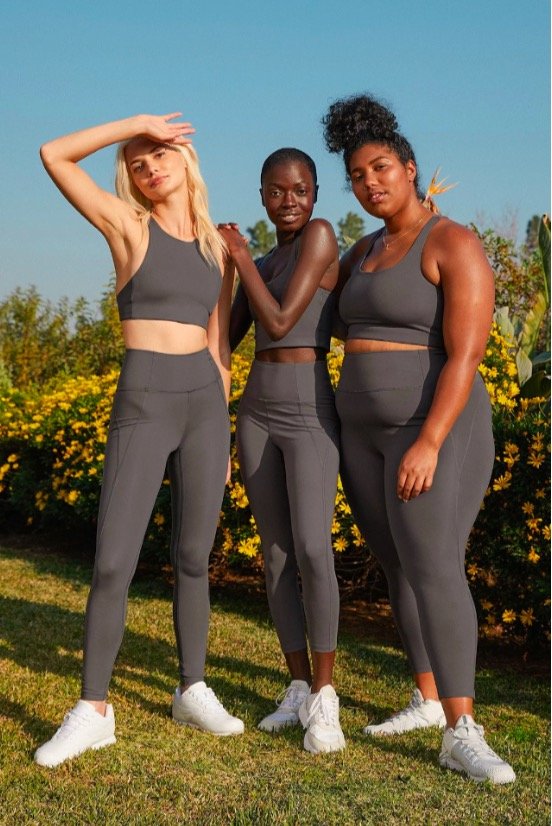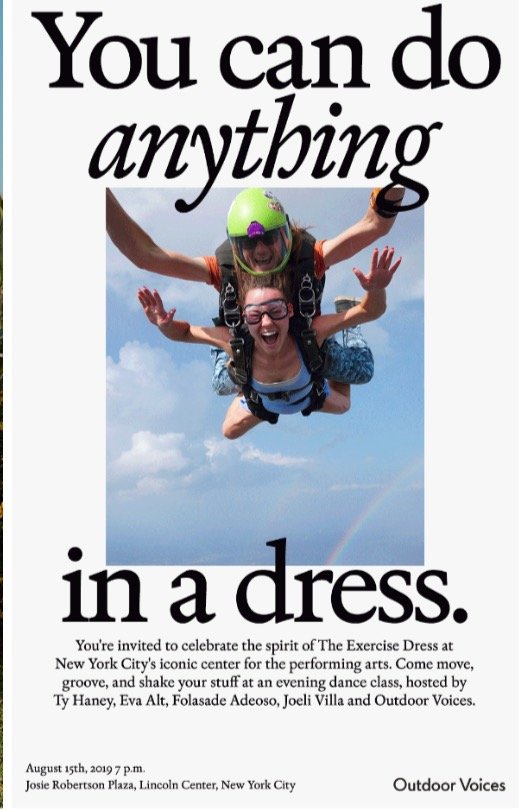Evolution of Athleisure
Maggie Bryan
“Athleisure: Casual clothing that can be worn for both exercising and for general use”, reads Merriam-Webster. This linguistic and stylistic fusion was unheard of before 1979, yet during the past two decades, the use of the term “athleisure” has skyrocketed. Today, it’s a term present in most Middlebury students’ lexicons, but it's also a drawer in their dressers and an identity they adopt from day to day. Athleisure represents the intersection of comfort, practicality, and versatility, perfectly encompassing the lives of students who constantly find themselves somewhere between the library, hiking in a national forest, or at a workout class. Yet despite modern trends of casual active wear, the idea of fusing function and fashion has been around for over a century.
In the early 1900s, relaxed “sportswear” emerged for the first time in Europe as designers Coco Chanel and Jean Patou pioneered casual styles for high fashion. Sporty for their time, many of these styles might be considered closer to business-casual today. During the following decades, utilitarian styles began to emerge in the United States. In the wake of the Great Depression and the first World War, Americans began to vehemently oppose impracticality and discomfort in dress. Women specifically found a new level of liberation from the flapper and suffragette movements, a feeling that was reflected in looser styles that allowed for ease of movement. During World War II, women replaced men in the domestic workforce and embraced the practicality of pants, especially loose wide-legged sailor styles and baggy lounge pants. The coveralls, flannels, and chore jackets of Carhartt and Woolrich became staples of the American worker and soldier. Not considered high fashion for their time, workwear would ultimately pave the way for cotton, wool, and denim to dominate the texture of the American closet.
Widely renowned as the founder of sportswear, designer Claire McCardell especially brought this desire for comfort to the American woman’s wardrobe. McCardell is known for her playsuits, pop-over dresses, and focus on problem-solving. “Most of my ideas come from trying to solve my own problems—problems just like yours,” writes McCardell in her 1956 fashion guide, What Shall I Wear?
Although they have fiercely stood the tests of time, the sportswear styles of McCardell and her colleagues would hardly be considered athleisure today, their “sportswear” was the new norm. Before the latter half of the 20th century, the words athletic and leisure were still antonyms. But as technology progressed, materials available to designers diversified and simultaneously, exercise became increasingly central in the lives of many Americans. In 1979, the term “athleisure” was ultimately coined in an article by Business Insider, to describe shoes and clothing made for those wishing to look athletic. Synthetic fabrics began to dominate the activewear industry and for the first time, heavy cotton and wool were countered by spandex and nylon. Flashy colors and patterns mirrored the era’s pop culture revolution. Like their sportswear predecessors, the athleisure styles of the 1980s were created with the same central goal, ease of movement.



In the 21st century, several brands have thrived on making high-tech apparel available to wider demographics; decreasing the degrees of separation between clothing and recreation itself. A name commonly cited in the athleisure revolution is Lululemon. Part of Lululemon’s ability to create a cult following lies in the community it built by selling the experience of athleticism. As the athleisure community grew, so did its controversies. Chip Wilson, founder of Lululemon has undergone substantial public criticism for his racist remarks and endorsements of child labor. In 2013, Wilson attributed the company’s downturn in product quality to those whose, “bodies don’t actually work for it,” referring to piling on the inner thighs of pants, particularly in customers with larger thighs.
The underlying stereotypes and prejudices of many athleisure companies have created a harmful culture of exclusivity in the industry. Although the phenomenon of athleisure and the culture surrounding it are largely positive, some of the stereotypes created by them are destructive and in direct opposition to the industry’s goal of making recreation more accessible and making people more confident in spaces of recreation.
Newer companies, namely Outdoor Voices, have capitalized on similar senses of culture by advertising group runs and community meetups. With an emphasis on getting outside, body neutrality, and protecting the environment, it would appear that the next generation of companies is acting as a counter to controversies of the past. As the industry evolves, the lines between clothing to wear to school, a workout, or lounge in, are becoming increasingly blurred. The definition of athleisure has broadened, today encompassing everything from sweatpants and matching sets to exercise dresses. The future of athleisure is the continued blurring of functionality and fashion. At its best, the sentiment is inclusive in every way because at its core clothing should allow activity to feel accessible to everyone, at all times.





